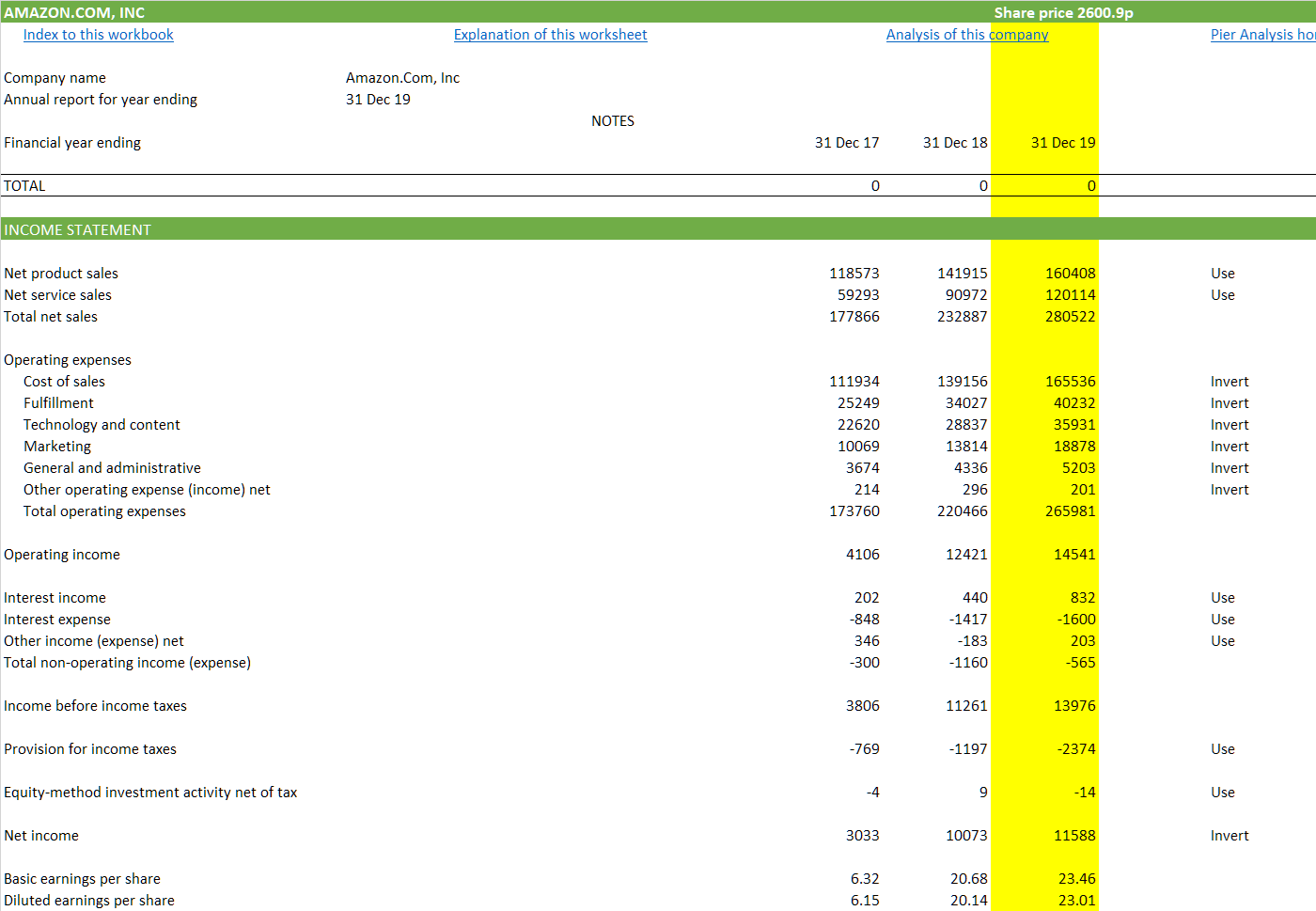This note is part of the Pier Review reference material.
Previous worksheet: Index. Next worksheet: Balance sheet.
Overview
It is one of the distinctive features of Pier Analysis that its reasoning can be traced back to exact reproductions of the annual report and accounts. Most research shows the financial statements condensed down to a small number of headings, and offers no disclosure about how that aggregation was achieved.

Detail
Most Pier Analysis models contain five accounts worksheets, showing material extracted from the subject company’s annual report or 10-K for the last five years. Sometimes there are fewer worksheets when a company has been trading for a shorter period.
The extract is intentionally very lightly formatted, and covers the income statement, cash flow and balance sheet. It may also include some notes to the accounts, when they are necessary to
map the indirect cash flow presentation usual found in the accounts to the more easily interpreted direct cash flow that is strongly favoured by Pier Analysis
disaggregate balance sheet entries to quantify a company’s net debt position accurately **.
In most models, the column of figures used in the model is the leftmost one. In a minority of cases, a different column needs to be picked up; in such cases the one used is highlighted in yellow
Many of the numbers in a set of financial statements are subtotals of other figures shown immediately above. Pier Analysis only uses the underlying values. The accounts worksheets show which figures are used in the analysis by tagging them at the right hand side of the sheet. Most are labelled “Use”. Some are labelled “Invert”, to show that they need their signs flipping before they are further processed in the model. The total at the top of the page checks that the lines selected by these tags are consistent by showing that they add up to zero, after any necessary sign flipping, in line with a zero-sum convention ** which is followed consistently through the model. That this quality has been achieved is checked on the audit worksheet **.
Previous worksheet: Index. Next worksheet: Balance sheet.
What next?
If you find this information interesting, you can sign up to have analysis based it delivered to your inbox several times a week.
Share Pier Review with interested friends.


